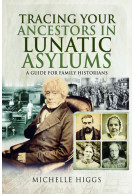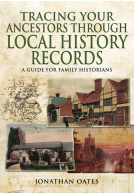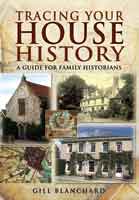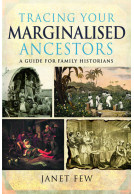Family History
Tracing Your Ancestors from 1066 to 1837 (Paperback)
A Guide for Family Historians
The trail that an ancestor leaves through the Victorian period and the twentieth century is relatively easy to follow – the records are plentiful, accessible and commonly used. But how do you go back further, into the centuries before the central registration of births, marriages and deaths was introduced in 1837, before the first detailed census records of 1841? How can you trace a family line back through the early modern period and perhaps into the Middle Ages? Jonathan Oates's clearly written new handbook gives you all the background knowledge you need in order to go into this engrossing area of family history research.He starts by describing the administrative, religious and social structures in the medieval and early modern period and shows how these relate to the family historian. Then in a sequence of accessible chapters he describes the variety of sources the researcher can turn to. Church and parish records, the records of the professions and the courts, manorial and property records, tax records, early censuses, lists of loyalty, militia lists, charity records – all these can be consulted. He even includes a short guide to the best methods of reading medieval and early modern script.
Jonathan Oates's handbook is an essential introduction for anyone who is keen to take their family history research back into the more distant past.
Tracing Your Ancestors in Lunatic Asylums (Paperback)
A Guide for Family Historians
How can you trace forebears who were patients in lunatic asylums and find out about their lives? What sources can you consult to discover their personal histories and gain an insight into their experiences? In this concise, accessible handbook, Michelle Higgs answers these questions. She provides a fascinating introduction to the subject and gives readers the means to explore the records for themselves.She concentrates on the period from the eighteenth century through to 1948 when the National Health Service was founded and looks in particular at the Victorian era which is the most popular period for research. Using original records, contemporary accounts, photographs, illustrations and case studies of real individuals, she brings the story of the asylums and their patients to life.
Different types of institution are described such as private madhouses, county lunatic asylums, facilities for idiots and imbeciles, and military mental hospitals. Chapters look at the admission procedures and daily routine of patients, plus different kinds of mental illness and how they were treated – for instance, those with depression or mania, criminal lunatics, mothers with puerperal insanity, epileptics and soldiers suffering from shell shock. There are sections on the systems in Scotland and Ireland, as well as England and Wales. Information is provided on all the relevant sources, from wills and the census to casebooks and admission and discharge registers.
Tracing Your Ancestors Through Local History Records (Paperback)
A Guide for Family Historians
Family history should reveal more than facts and dates, lists of names and places – it should bring ancestors alive in the context of their times and the surroundings they knew – and research into local history records is one of the most rewarding ways of gaining this kind of insight into their world. That is why Jonathan Oates’s detailed introduction to these records is such a useful tool for anyone who is trying to piece together a portrait of family members from the past.In a series of concise and informative chapters he looks at the origins and importance of local history from the sixteenth century onwards and at the principal archives – national and local, those kept by government, councils, boroughs, museums, parishes, schools and clubs. He also explains how books, photographs and other illustrations, newspapers, maps, directories, and a range of other resources can be accessed and interpreted and how they can help to fill a gap in your knowledge.
As well as describing how these records were compiled, he highlights their limitations and the possible pitfalls of using them, and he suggests how they can be combined to build up a picture of an individual, a family and the place and time in which they lived.
Tracing Your House History (Paperback)
A Guide For Family Historians
Anyone who wants to find out about the history of their house – of their home – needs to read this compact, practical handbook. Whether you live in a manor house or on a planned estate, in a labourer's cottage, a tied house, a Victorian terrace, a twentieth-century council house or a converted warehouse – this is the book for you. In a series of concise, information-filled chapters, Gill Blanchard shows you how to trace the history of your house or flat, how to gain an insight into the lives of the people who lived in it before you, and how to fit it into the wider history of your neighbourhood.A wealth of historical evidence is available in libraries, archives and record offices, in books and online, and this is the ideal introduction to it. Gill Blanchard explores these resources in depth, explains their significance and directs the researcher to the most relevant, and revealing, aspects of them. She makes the research process understandable, accessible and fun, and in the process she demystifies the sometimes obscure language and layout of the documents that researchers will come up against.
As featured in the Wigan Observer.
Tracing Your Marginalised Ancestors (Paperback)
A Guide for Family Historians
Often, our most fascinating ancestors are those on society’s margins. They might have been discriminated against due to personal misfortune, or have been a victim of society’s fear of difference. You may have ancestors who were poor, or sick, illegitimate, or lawbreakers. Were your family stigmatised because of their ethnicity? Perhaps they struggled with alcoholism, were prostitutes, or were accused of witchcraft. This book will help you find out more about them and the times in which they lived.The nature of this book means that it deals with subjects that can make uncomfortable reading but it is important to confront these issues as we try to understand our ancestors and the society that led to them becoming marginalised. In Tracing your Marginalised Ancestors, you will find plenty of suggestions to help you uncover the stories of these, often elusive, groups of people. Will you accept the challenge to seek out your marginalised ancestors and tell their stories?












